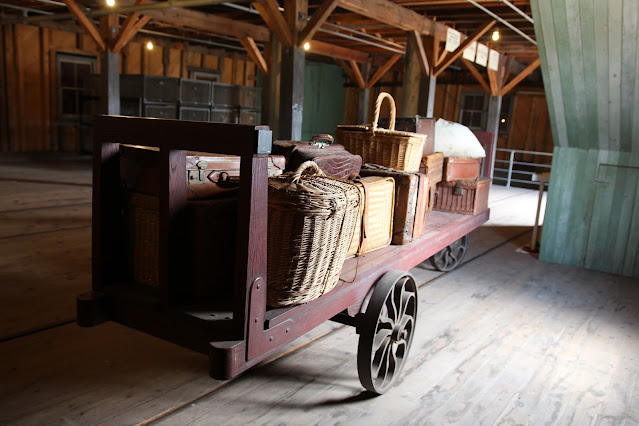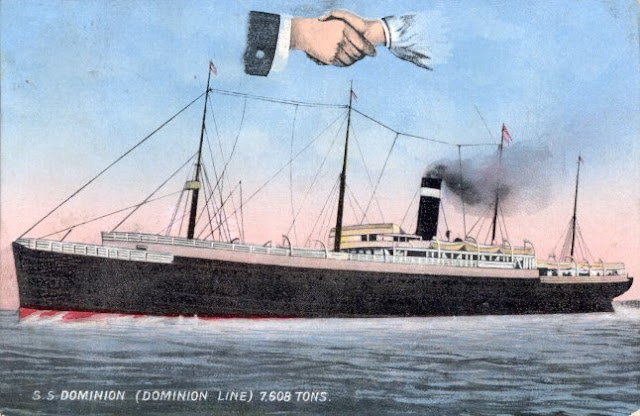This is part two of a two part story about Jacob Besler’s journey to Canada from Galicia. If you missed part one you can read it here.
The morning of June 14 1902 dawned clear and sunny. It was going to be a beautiful day, especially since Jacob’s journey across the Atlantic was almost at an end. He’d heard that they were now in the middle of the St Lawrence River and would soon be arriving in Quebec. Jacob and his cousins Johann Kendel and Philip Besler were excited and glad they would soon be on dry land. The 722 3rd class passengers had been tightly packed into the ship and they longed for open space. The ship stops and a boat approaches - the medical superintendent Dr. G.E. Martineau is now boarding the ship to check for illness.
Jacob and his cousins line up. Behind them in the line they hear coughing and sniffling. That doesn’t sound good. They turn to see fellow Galicians the Sloboda family. The Landestreu group are the only German speaking Galicians on the voyage but they know enough Ukrainian to converse with their fellow passengers. Jacob, Johann and Philip pass their examination with flying colours. But Maria Sloboda and her children aren’t so lucky - they have the measles. The doctor also finds one case of smallpox and one of chickenpox. As a result 352 steerage passengers and 15 members of the crew will be quarantined.
 |
| Library and Archives Canada. Passenger Lists, 1865-1922 |
 |
| Library and Archives Canada. Immigrants at Grosse Île Quarantine Station 1832-1937 |
Grosse Ile was established in 1832 as a place to inspect and detain incoming ships and people to prevent disease spreading to North America. Grosse Ile was the perfect spot. It is located 50 kilometres downstream from Quebec City, en route for ships arriving from Europe via the St. Lawrence river. It had a good supply of fresh water, and as an island, was naturally suited for keeping newcomers isolated from the mainland. Years had passed since the cholera and typhus epidemics that struck down so many Irish emigrants. But in 1902 illness was still an issue.
 |
| View of Grosse île from the river |
Jacob and his cousins are confused. Why do they have to disembark here? Luckily for the travellers German speaking agents appear to explain the situation.
After a short ride to the island the travellers are brought to the two story disinfection building where they and their possessions will be disinfected.
 |
The sick passengers are taken directly to the hospital
The ship will be sprayed with mercury bichloride to kill micro-organisms and then fumigated with sulphur dioxide gas to kill any pests.
All of Jacob’s possessions are taken and put into numbered bags. The bags are put into a large wire mesh box and then onto railcars to be brought into the steam chambers for dry steam cleaning to kill any pathogens.
Next: a refreshing disinfecting shower! Jacob looks down the corridor and sees 44 steel stalls. Each stall has a metal door with chicken wire around the top to prevent any peeping on your neighbour. Jacob enters, undresses and gives his clothing to the agent for disinfection. Jacob hesitates, then enters the shower. For 15 minutes water sprays from above and from the side. The solution is a mixture of hot water and diluted mercury bichloride. First class passengers are used to showers but this is a new experience for Jacob. There were no showers in Galicia.
Exiting the shower Jacob is glad to see his clothes have been returned to him. He dresses, receives his disinfection certificate and is reunited with his luggage.
He is relieved to see Johann and Philip and is glad that they’re allowed to stay together. They are now approached by nurses who inspect them again for signs of disease and check to ensure they've been vaccinated against smallpox – a legal requirement to enter Canada. All is in order so the trio heads to the third class hotel where they will complete the mandatory quarantine period with daily medical exams.
 |
| The third class room is the space between the two couches |
At the third class hotel Jacob, Philip and Johann share a room. The quarters are cramped but food is provided.
There are no toilets or sinks in the building so the travellers must visit the nearby washhouse.
There are no lounges but they are able to go for walks around the island. The weather during their quarantine is pleasant though some days are rainy. Jacob and his companions don’t become ill but some others come down with measles: all 6 members of the Vasilinchuk family, all 7 members of the Panchuk family and the rest of the Sloboda family, among others.
By July 2 most of the passengers have successfully completed their quarantine and are ready to leave. Jacob and his companions are excited to finally be on their way after eighteen days.
They board a shuttle boat to the port of Quebec. The pier building, similar to Pier 21 in Halifax, is no longer there. Here is a photo of the site.
A medical inspection confirms that the Landestreu group is now healthy. They also must pass a civil inspection - Jacob only has $6 in his pocket as does Johann. Their older cousin Philip has $40 which should be enough to get them to their final destination and the land they plan to homestead.
At 6pm on Wednesday July 2 they board the CPR train to Winnipeg. This is a later schedule but gives you an idea of the time involved - they don’t arrive in Winnipeg until 9:50 am on Saturday July 5.
 |
| CPR Schedule, 1912. https://open.library.ubc.ca/collections/chung/chungtext/items/1.0357107 |
Winnipeg’s current train station wasn’t built until 1912 so the facilities would have been more basic. Trains didn’t run north into Saskatchewan until 1909 and at the time Saskatchewan was still a territory. Jacob would have had to purchase supplies and once again travel by horse and cart to his new life. It was a long journey but he had finally arrived in Canada and now the hard work of clearing and settling could begin. On Thanksgiving Day I am thankful a young man of 19 decided to make a better life in the new world.






























